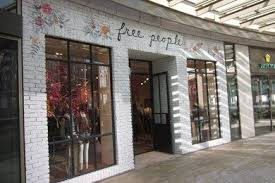5 Tips for Improving Your Retail Store Operations
- Barb Ferrigno

- Nov 3, 2020
- 3 min read
Updated: Jan 23, 2022

by Sam Makad
Delivering an amazing in-store experience is essential to long-term success in today’s retail industry. But with more and more consumers moving online, standing out from the crowd is increasingly difficult.
Creating an integrated customer experience that matches the ease and efficiency of shopping online is no longer a necessity but expected. But if store operations aren’t aligned, striking the right tone in-store and making a sale is hard to do.
That’s why making sure your retail store operations are aligned is so important.
What is Retail Store Operations? Retail store operations is a broad term that refers to all the duties—such as labor management, visual merchandising, in-store marketing, inventory management, store layout and design, and the implementation of standard operating procedures—that occur at the store level to keep it functioning.
Running a store is a delicate balancing act. And when retail store operations aren’t working in tandem at their highest levels of efficiency, stores can appear disorganized, leading to a loss of sales and brand loyalty.
Everyone—from big box stores to small businesses—struggles with their retail store operations.
Focus on the six areas listed below to improve your business and get a leg up on the competition.
Table of Contents
Streamline Store Communications
Identify and Automate Time-Consuming Tasks
Simplify Store Visits and Audits
Focus on the Right KPIs
Monitor and Measure Merchandising and Marketing Compliance
1. Streamline Store Communications Miscommunication is the bane of any store or district manager’s existence. When directives don't get followed or get misinterpreted, chaos ensues. And when communications aren’t replied to or missed entirely, it’s impossible to know what’s being done or implemented in-store.
By streamlining HQ-to-store communications through retail communication software, retailers can ensure everything—from direct messages with store associates and field team members to announcements and need-to-know information—is being read and responded to on time.
2. Identify and Automate Time-Consuming Tasks Like any industry, retail isn’t without its inefficiencies, especially at the store level, where time-consuming tasks—like inventory checks, cash handling, and emails—can take associates away from customers and eat up their time.
When looking to improve retail store operations, try and identify your team’s most time-consuming tasks, and find ways to automate them. For instance, many retailers are increasingly using RFID inventory management systems to keep track of stock levels, so associates spend less time in the backroom and more time with customers.
As the adage goes, time is money. By reducing inefficiencies at the store level, retailers can help their employees stay focused on what matters most.
3. Simplify Store Visits and Audits Store check-ins and audits are essential to ensuring everything from merchandising and marketing compliance to keeping track of stock levels and making sure corporate standards get followed.
Retailers often rely on field teams armed with pen and paper or digital spreadsheets to confirm what's getting done in-store, putting a drain on resources.
With retail operations software like Foko Retail, store visits and audits can be done remotely by sending surveys down to the store level. That way, even associates can fill out a report and upload it, so results are received and referenced by HQ for any problem areas of inaccuracies immediately, speeding up retail store operations.
4. Focus on the Right KPIs If you work in retail, there’s no doubt you’ve heard of the traditional retail KPIs and metrics, like total sales per square foot, conversion rates, gross and net profits, YOY growth, and foot traffic. But those KPIs and metrics only make up part of a much bigger picture.
It's crucial to monitor task completion and approval rates, view counts and comments on corporate updates and announcements, and overall user engagement to see how the team members are responding to internal communications and if they're getting their jobs done correctly (and on time).
5. Monitor and Measure Merchandising and Marketing Compliance It's not just about the products you sell, but how you present them in-store. Still, many retailers have no idea what their stores look like and if brand guidelines get followed.
That’s where retail task management and communication software come in. By opening up the lines of communication and requesting photos of displays and promotions, retailers can gain better visibility into retail store operations and monitor multiple locations from a distance.
Running a store isn’t an exact science. But if you consider these tips when improving your retail store operations, you can set stores up for long-term success. Sam Makad Sam Makad is a business consultant. He helps small & medium enterprises to grow their businesses and overall ROI. You can follow Sam on Twitter, Facebook, and Linkedin.




Comments